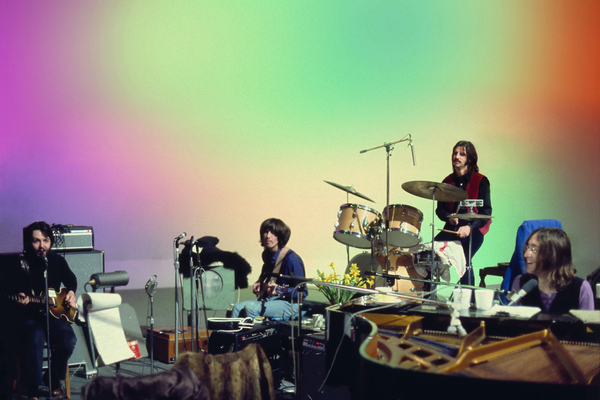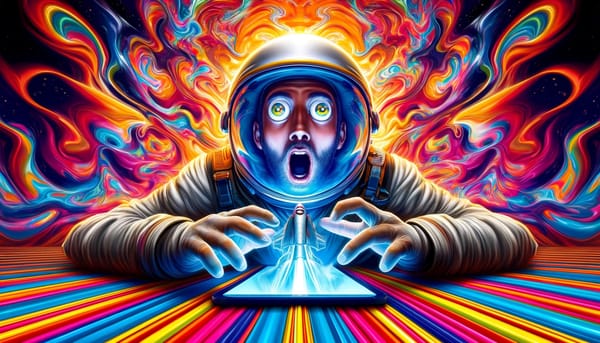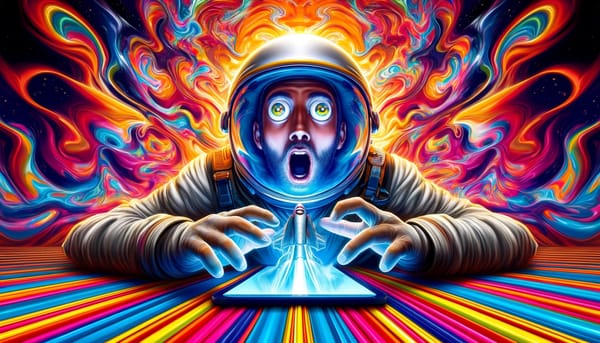Influencer Marketing Needs a Makeover
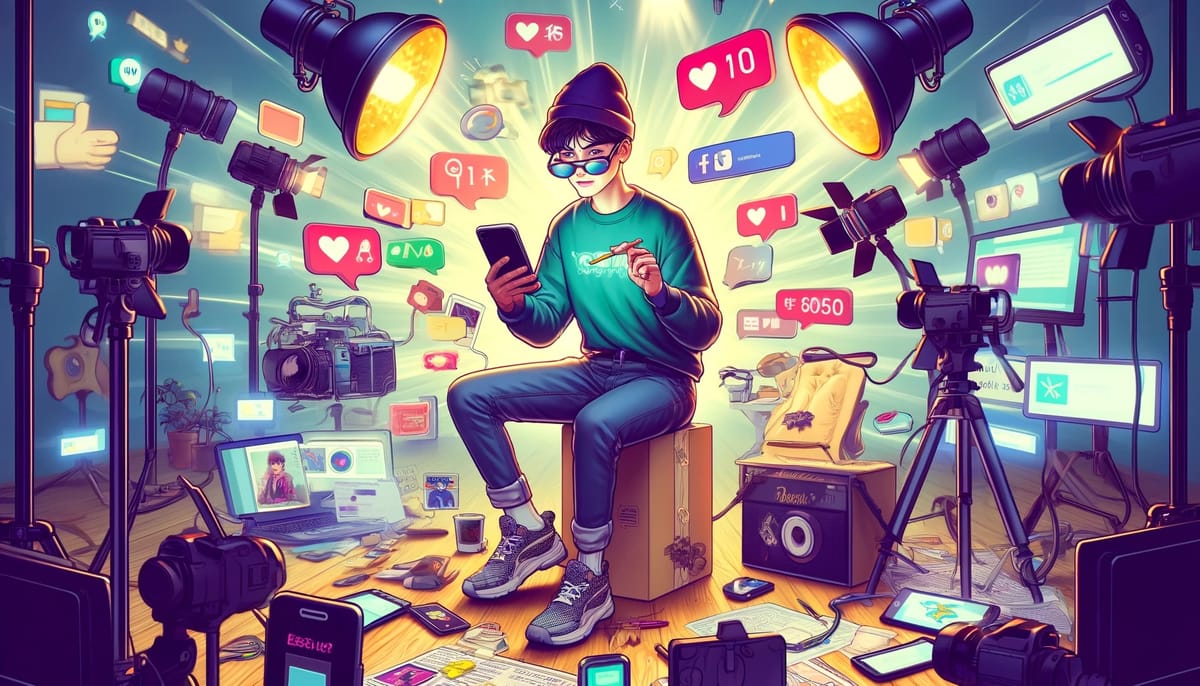
A lot of brands are getting influencer and creator partnerships wrong.
Humans are tribal creatures. We crave relationships. It’s how we make sense of the world. This has been true since we were barely walking upright and finger-painting in caves. Within relationships, there are dynamics. Some relationships are critical, others less so. We calibrate our existence to how we categorize relationships. It’s how we prioritize engagement with others.
Nowhere is this more apparent than in romantic relationships. Thankfully, I am blessed to be happily married going on eight years now, because dating in 2024 seems akin to standing within the innermost circle of Satan’s mosh pit. I remain unconvinced that much has changed since our early days tens of thousands of years ago. It is still a good reference point for understanding influence.
Early humans such as Cro-Magnon and Neanderthals are believed to have formed romantic or sexual relationships based upon several factors: social bonding, family ties, and cooperative needs for survival such as hunting and gathering. Fast forward to today and not much has changed. We still primarily look to choose a mate that helps us feel whole, and well-connected, and improve our station in life. These are traits within the three base layers forming Maslow’s “Hierarchy of Needs.” Beyond survival, safety, and belonging we have more individualistic needs: esteem and self-actualization. At these levels, we want respect and recognition as we realize our full potential.
When we’re looking to choose a mate, we have a job to be done: convince the other person that we are worthy and will meet their needs so that they in turn help us to meet ours. It’s not just lovers and partners we evaluate this way, either - we seek and filter for friends and professional peers to fit within the hierarchy. Every relationship we hold is categorized by its role and value within our world. We attempt to exert influence over another to have our needs met, or to have our beliefs validated.
Influencer marketing is all about relationships, too. For brands to engage with communities at large, they need to be able to be seen as credibly connected with those who generate influence among the masses. That means investing in people’s basic needs: to feel safe, seen, and heard. Brands need to think like a person does when developing community and influencer programming. Much like mating, this isn’t a one-step, one-size-fits-all process. It’s about putting in the work to build connection - all the dates, gifts, demonstrations of affection, and understanding that help the other person realize, “he/she/they get me.”
This is important stuff, too. Social media still dominates time and attention online. The top motivations for using social media remain FOMO-focused: staying connected and on top of what is happening, and who’s doing it. Moreover, people crave authenticity. A majority of consumers believe brands should strive to be (more) relatable on social media.
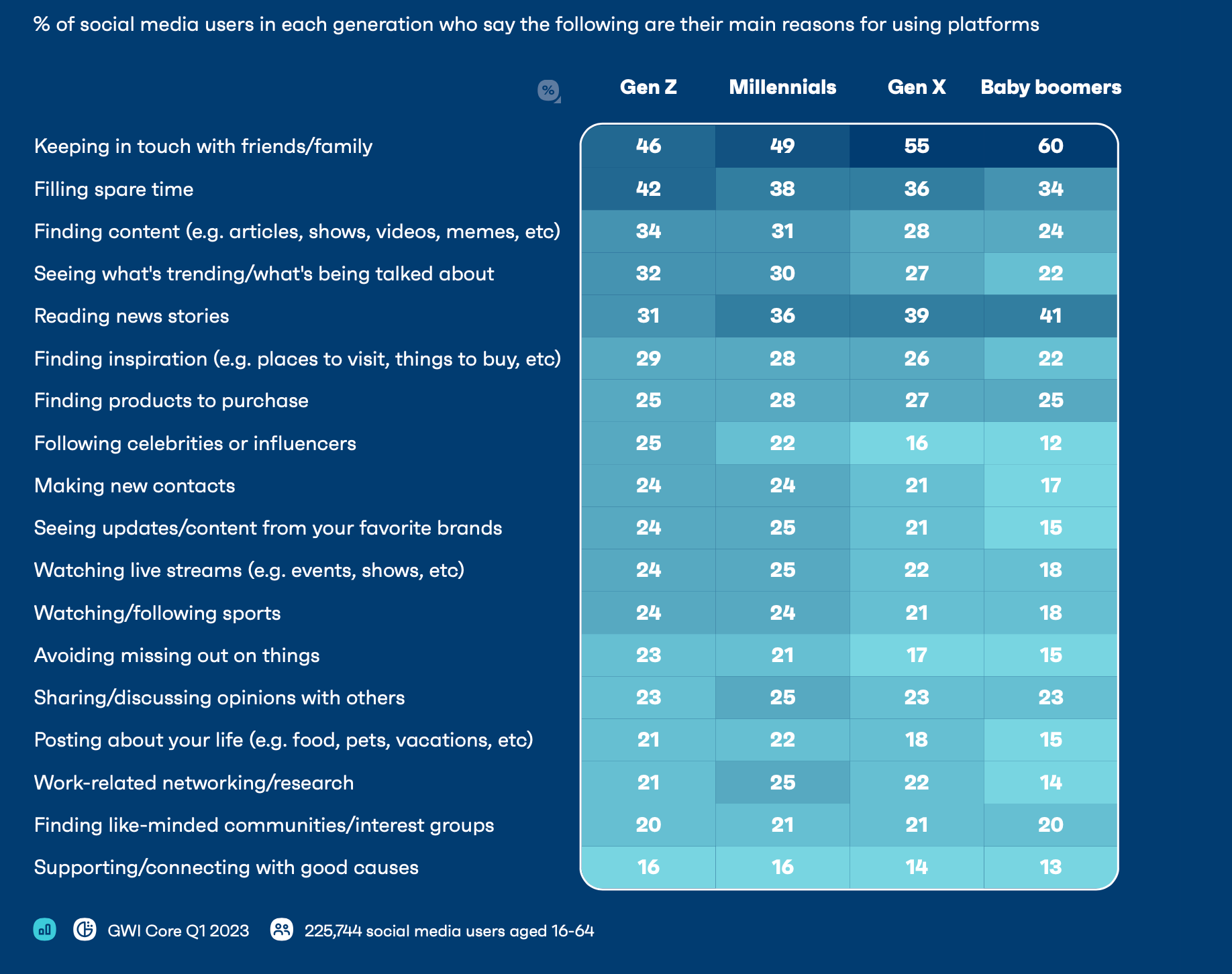
Unfortunately, most brands are pretty terrible at authenticity. They’re a lot like the worst stereotypes of the dating pool at your local bar/pub. You know the types:
- The over-served, under-confident person who’s frantically hitting everyone up at last call with the same poor plea.
- The egotist who has impossibly high standards - and makes sure that everyone within earshot knows.
- The completely uninhibited exhibitionist who’s living their best life, while the rest of us suffer as collateral damage.
A lot of companies get their influencer strategies wrong in three critical ways:
- Lacking a clear understanding of tribes/hierarchies within a community
- Executing a top-down relationship-building program
- Unclear or misleading measurement models
It’s most important for brands to have clear self-awareness. Without a clear mission, positioning, and objectives for your brand, you’re going to wander in and out of communities doing more harm than good. It‘s comparable to if someone created different profiles across different dating apps to try and get someone, anyone to connect. Don’t be that person.
Brands also need to have a strong comprehension of a community’s structure. Like any community, there are niches and hierarchies. Every community has more passive members and more passionate enthusiasts. It is important to have a clear understanding of how the people and pieces of the community fit together; the values driving identity, the roles generating outputs, and the motivations for behaviors. Without this information, you cannot understand how your brand relates (or not) to this community. Which means you could be going into a bad blind date. Anyone who’s been on one of those (yours truly) knows what it’s like - terrifying in the moment, and frustrating afterwards when you realize the time and effort you spent for nothing in return.
It’s also important to understand the broader environmental and cultural changes that are occurring right now in the marketing landscape. Zoe Scaman has an excellent perspective on this in her work, The New Fandom Formula. I consider it a must-have for beginning your efforts to improve community-based marketing. As the internet becomes increasingly algorithmically driven and decentralized, power is distributed at the grassroots. Identifying the people who not only have the most influence but can generate influence on your brand’s behalf is essential. These are not the same things.
Having established your brand’s mission, positioning, and objectives you can now start to think about the types of influence and actions you want or need to generate. All influence should generate action, but all influence and all action are not equal. That means you have to understand a person or entity’s role within a community. That requires a way to match the role of a person or entity to their value and then a manner of measurement. I have a simple, three-tier approach to doing this. It will work for almost any brand looking at any community. The three roles of influencers are ambassadors, creators, and fans.
Ambassadors
By political definition, an ambassador is a diplomatic official who represents their country’s government within a foreign country. Ambassadors are responsible for managing diplomatic relations and promoting their native nation’s interests. Marketing ambassadors perform a similar function. They serve as an envoy to a particular audience, the intention being to demonstrate credibility. The ambassador is an individual representative of your brand to a community. Their role is to build credibility with the relevant tribes.
Creators
Creators are another type of influencer. I typically split these partners into two types: “models” and “makers.” Models are the creators who show up in their work; they’re known for the content they create featuring themselves. Their success is largely built upon their style and attitude. Makers are creators who develop content but are not necessarily the face of it. The obvious examples here are artists - animators, illustrators, and music producers to name a few. Their role is to build storytelling that engages tribes within a community.
Fans
Fans are the third type of influencer. It’s important to note that fans are not necessarily followers. Fans are the workhorses of communities. They consume content from ambassadors and creators, and they also create content. Often, this is the most overlooked category of influencer within a brand’s marketing plan. Brands take a one-way approach to communication, missing massive growth opportunities. Fans’ role is to force-multiply a message within a community.
There’s potential for different people and entities to cross into two or more of these categorizations. Some influencers are both ambassadors and creators: Kim Kardashian and Mr. Beast, for example. Some fans can also be creators. The triple Yahtzee is if you can identify a fan with the chops to create and the platform to be an ambassador. Those are exceedingly rare, but the point is that you don’t need to be rigid in your thinking. You need to have a clear map, with the ability to adjust as you go. Rather than look at this in a linear model, it’s better to view it as overlapping areas of value.
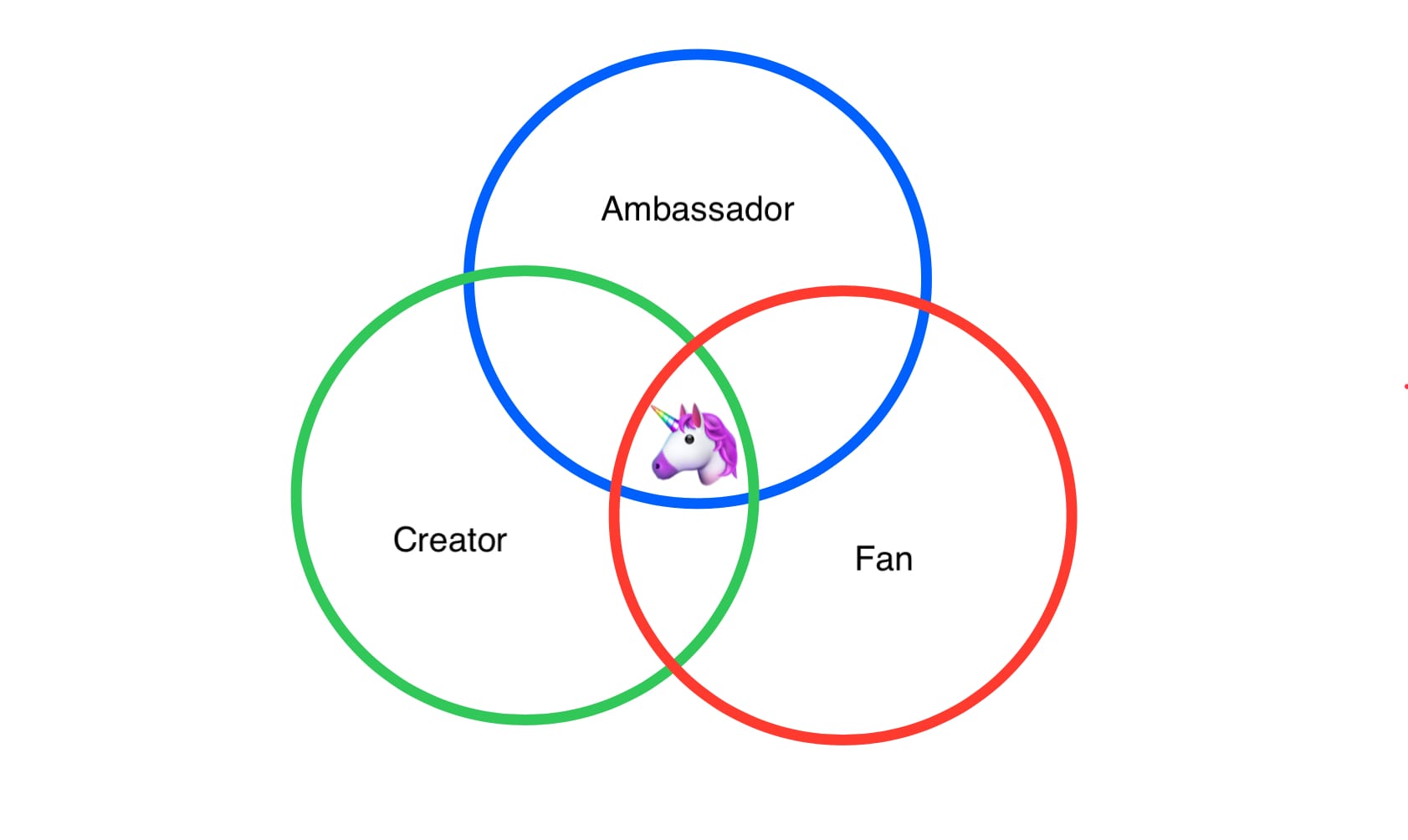
For each categorization we’ve established a clear role, so now we need to establish a value for that role. The value is what we expect the influencer to achieve based on their role within a given community. Within our three-part model, value can be simply summarized as follows:
Ambassador: ROLE - generate affinity / VALUE - brand “halo”
Creator: ROLE - inspire engagement / VALUE - direct action
Fan: ROLE - amplify the output / VALUE - earned media
At this point in your plan development, details will be crucial to define clear measurements. A measurement model is dependent upon a company’s industry, competition, marketing ecosystem, assets, and resources. As you define your desired outcomes, it’s important to think about linkage. These influencer layers are fluid, and therefore you need a measurement model that can clearly define ROI but also maintain fluidity. That’s why I like developing a weighted model using consistent metrics across all three categories of influencer engagement. It will allow you to have a clear, consistent methodology that your stakeholders in the C-Suite can comprehend, and it gives you flexibility to adjust the formula from one category to the next, or even to adjust a particular partner who may evolve from say, creator to ambassador.
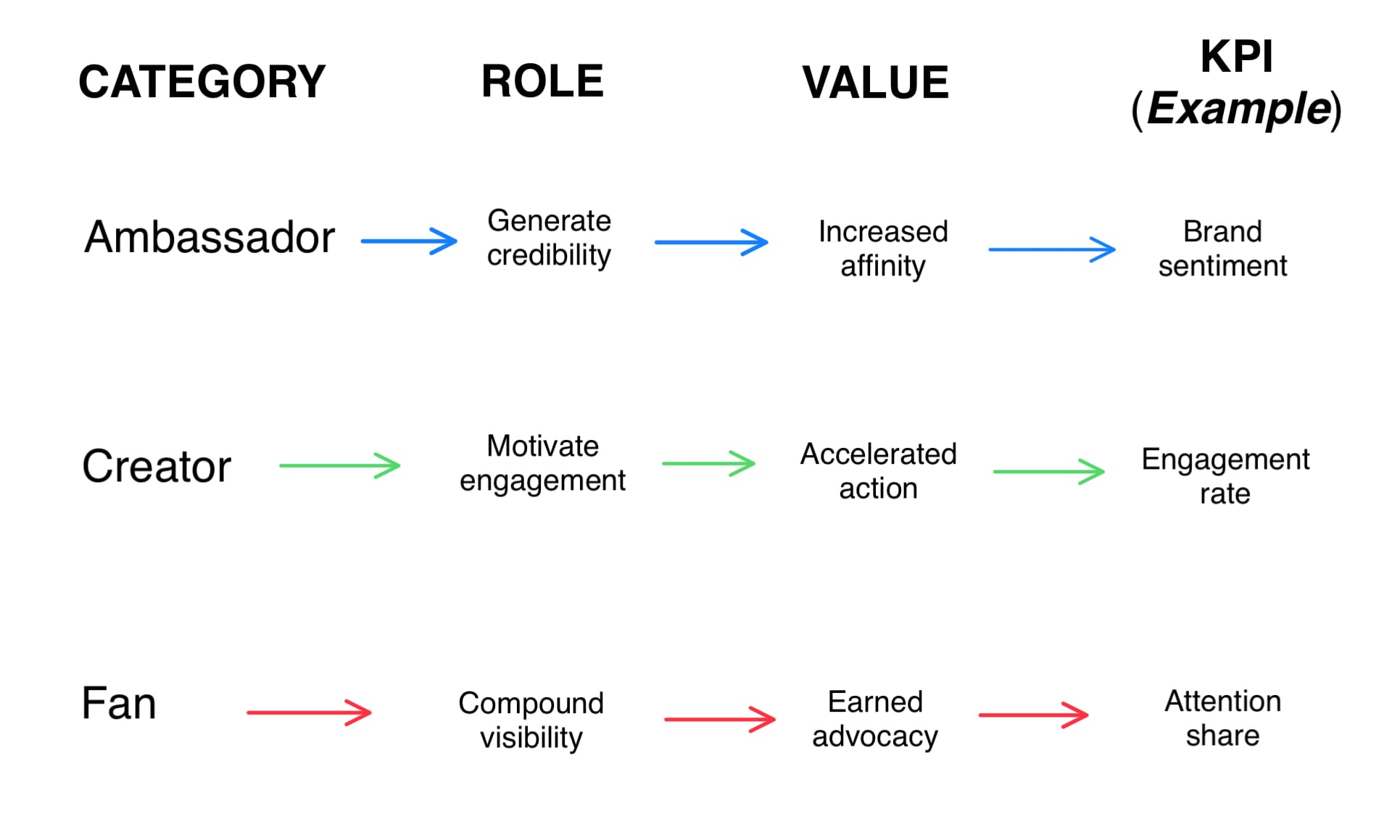
Then we come to the partnership programming model. How many ambassadors do you need? What about creators? Fans? It all depends on the particulars of your brand and the competitive landscape. There are some general principles I do believe can guide you:
Focus on Fans First
Fans are the lowest-cost, highest-reward partners you can have. They’re the barometer for creators and ambassadors. If you can find ways to allow them to participate in your brand storytelling, you’ll earn valuable equity that can help in building better partnerships with creators and ambassadors. The secret is getting out, btw; recent reporting shows most DMOs are spending $500 or less on creator content (per piece). This trend is being driven by grassroots fandom.
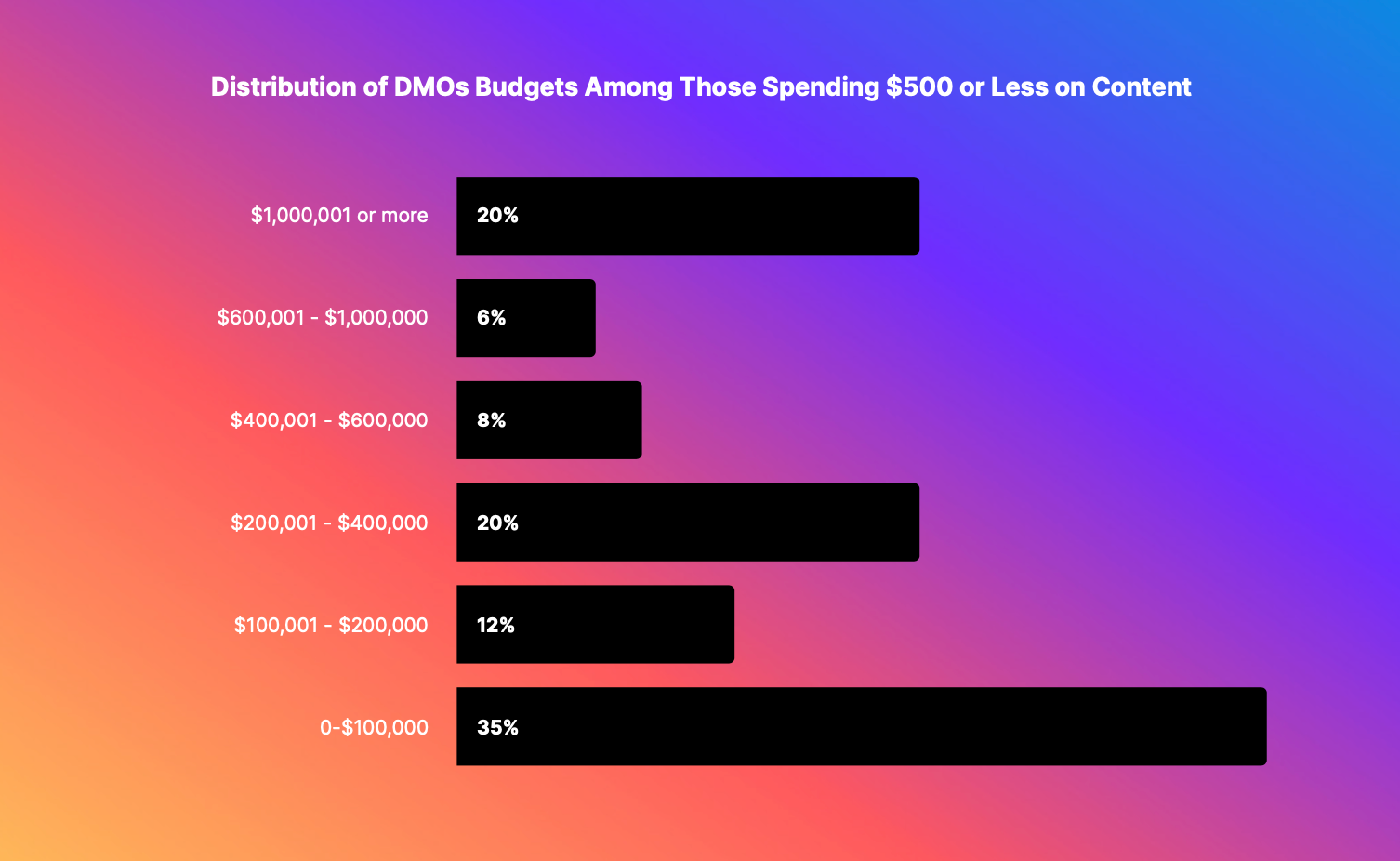
Curate to Specific Needs
Do not take a shotgun approach. Do not go after creators or ambassadors simply because they have large audiences. What is true of human relationships remains true here - opposites can attract, but there needs to be some common ground at the core. Ask yourself questions such as, “what are the brand’s gaps? What type(s) of partner(s) best fit them?”
Allow the Partner to Lead
Nobody wants to be in a relationship with a nag. Too many brands kill promising partnerships by suffocating the influencer with overly prescriptive briefs, too many rules for creativity, unclear measurement, or some combination of these three elements. Remember - you’re partnering with them for what they can do to reach and engage their audience within a community. Let them win for you. Everyone will get a gold star.
And there you have it - just like dating, it’s a super easy path to tread… kidding! You’re going to get challenged by the economics of the marketplace, by restrictions on resources, and by the level of comprehension and risk tolerance executive management possesses. When you feel the pressure, keep coming back to this premise: true influence results in action, and it is built - not born.


